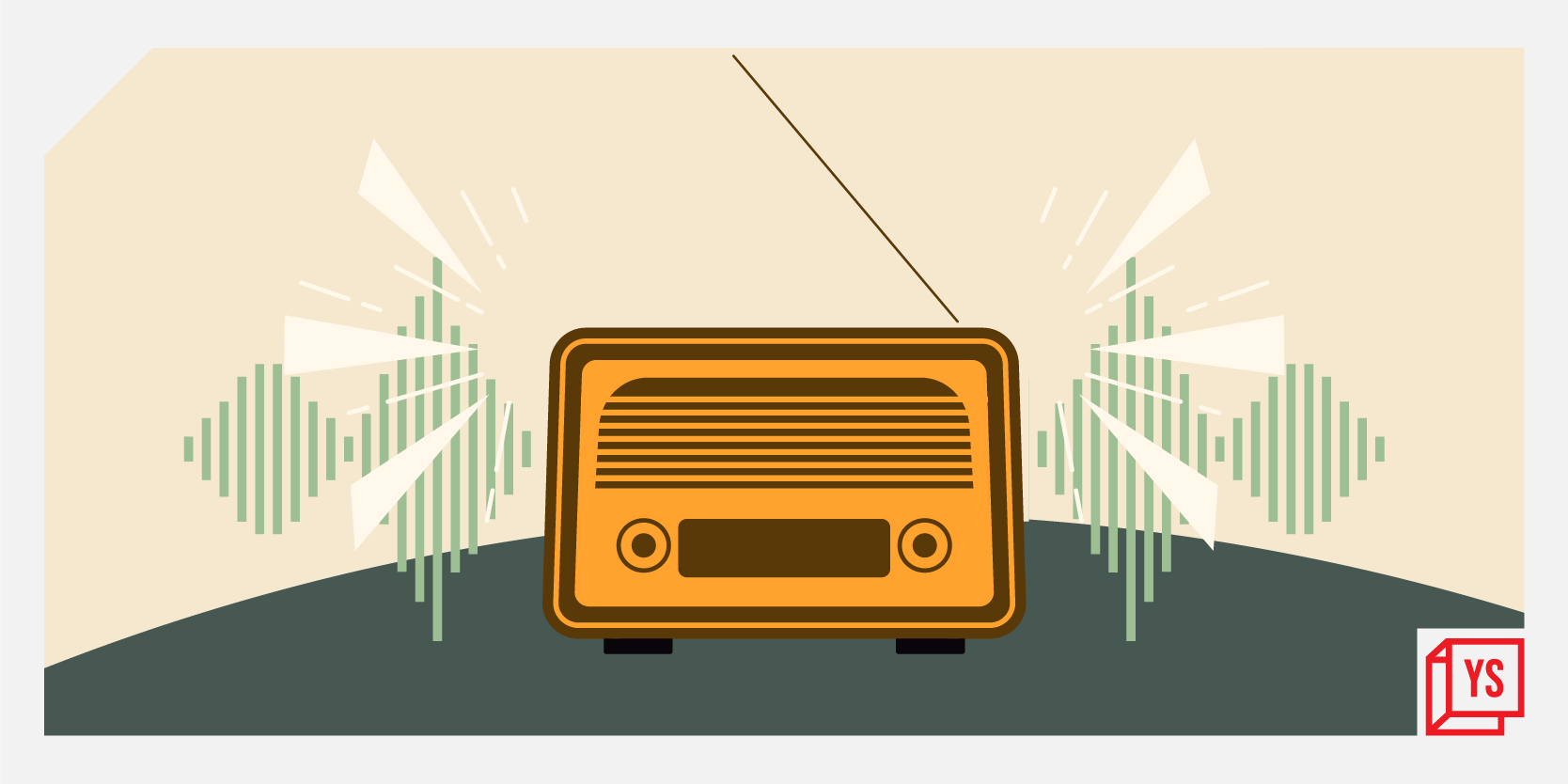What’s common to shopping, a road trip, or the morning commute? It’s the radio, the ubiquitous friend in the background, delivering entertainment, music, local news, sports updates, discussions, and much more.
The radio has been part of our life for a long time now.
But things were put into motion only when a young Italian named Guglielmo Marconi invented “the wireless telegraph” while experimenting in his parents’ attic. He used radio waves to transmit Morse code and the instrument became known as the radio.

In 1906, Marconi shared the Nobel Prize for physics with Ferdinand Braun, a German, in recognition of their contributions to the development of wireless telegraphy. He proved the feasibility of communication over the radio by sending and receiving a telegram over the first radio signal in history in 1895.
Radio works by changing sounds or signals into radio waves that travel through air, space, and solid objects. The radio receiver changes them back into the sounds, words, and music we hear.
The technology spread like wildfire, signalling that the world was soon set to become a smaller place.
In 1908, a long-distance radio message was sent from the Eiffel Tower in Paris for the first time, and in 1916, a New York station broadcasted the first radio news bulletin, on the occasion of the election of the US President. Three years later, in 1919, America’s first radio station was set up in Pittsburgh.
By the 1930s, most households in the US and Europe had at least one radio and families gathered around it every evening, spending hours listening to variety shows or comedies. This was the beginning of the Golden Age of Radio, and was followed by the debut of FM radio in 1939.
Between 1920 and 1945, the radio developed into the first electronic mass medium, monopolising “the airwaves” and defining generations of mass culture.
Radio waves are very widely used in modern technology, in radio communication, radar, radio navigation, remote control, remote sensing, and other applications. But the humble radio – at home in households and restaurants, cars and hotel rooms – dominates them all.
Radio in India
In India, the history of radio broadcasting traces back to August 1920 when one of the first radio broadcasts was transmitted from the roof of a building. Three years later, the first radio programme was aired by the Radio Club of Bombay.
In 1923 and 1924, three radio clubs were established in Bombay, Calcutta, and Madras, and radio broadcasting in India began as a private venture. The Radio Club of Bombay broadcast the first radio programme in India in June 1923. Music and talks were included in the two to three-hour daily broadcasts.
The lack of financial support forced these stations to shut down in 1927. This was followed by the establishment of the private Indian Broadcasting Company Ltd (IBC), which was authorised to operate two radio stations: the Bombay station, which was launched on July 23, 1927, and the Calcutta station, which started on August 26, 1927. However, things didn’t work out and the company went into liquidation on March 1, 1930.
The government took over the broadcasting facilities and began the Indian State Broadcasting Service (ISBS) on April 1, 1930, on an experimental basis for two years. This went on to become All India Radio (AIR) on June 8, 1936.
When India became independent in 1947, AIR - renamed Akashvani - was made a separate department under the Ministry of Information and Broadcasting. It then had six radio stations - Delhi, Bombay, Calcutta, Madras, Tiruchirapalli, and Lucknow - and 18 transmitters.
Back then, listening to the radio didn’t mean just a click or pushing a button. People had to buy a Broadcast Receiver's Licence (BRL), priced at Rs 10 per year, in the 1960s to listen to the radio. The amount was revised to Rs 15 in the 1970s. Radio licences were abolished in India in 1991.

The AIR network had expanded to around 146 AM stations by the mid-1990s along with a national channel, the Integrated North-East Service that aimed at reaching tribal groups in northeast India, and external services.
AIR today has a network of 262 radio stations, is accessible to almost the entire population of the country, and reaches nearly 92 percent of the country’s total area.
In 1967, commercial radio services in India began with the Vividh Bharati service headquartered in Mumbai. In 1977, FM broadcasting started in Madras (now Chennai). Till the 1990s, the AIR was all that Indian audiences had, but the emergence of private broadcasters resulted in private FM slots.
Broadcasting over radio went digital in 1994, when radio streaming started via the internet. This was accompanied by the first internet-only 24-hour radio station.
Over time, the number of private players dwindled and Radio City, Radio Mirchi, and Red FM are among the stations that managed to sustain themselves.
In India, radio continues to play an important role in disaster management by educating and informing listeners and facilitating discussions.
Celebrating the radio
Every year, World Radio Day is observed on February 13 to celebrate “one of the oldest and most widely consumed mediums of communication”. First proclaimed by the member states of UNESCO in 2011 and later adopted internationally by the UN General Assembly in 2012, the idea is to promote the medium, increase accessibility, and encourage more people to use it.
This date was chosen as it was the anniversary date of the UN international broadcasting service, which was created on February 13, 1946, and celebrates radio as “part of humanity's history”.
The radio has evolved and adapted with changing times, and the UN has noted the important role it played during the COVID-19 pandemic. The medium made it possible to “ensure continuity of learning, to fight against misinformation, and to promote barrier gestures,” according to the organisation, paying tribute to the medium and the way in which it has adapted to “societal transformations and listener’s new needs” for over a century.
In India, the popularity of Prime Minister Narendra Modi's Mann Ki Baat proves the importance and reach of radio as a medium of communication.
On World Radio Day 2022, UNESCO has called on radio stations to celebrate the day through three sub-themes:
- Trust in radio journalism: Produce independent and high-quality content;
- Trust and accessibility: Take care of your audience;
- Trust and viability of radio stations: Ensure competitiveness.
The history of the radio goes back over 115 years, but it remains one of the most resilient and far-reaching mediums of communication – even in the time of instant messaging and WhatsApp.
According to the European Broadcasting Union (EBU), the future of radio is digital, multiplatform, and hybrid. “Listeners will access radio on different devices, from ordinary receivers to smartphones and computers, with a screen showing extra information, images and multimedia content,” it says in a report.
Whatever the future may hold, it will remain a simple, direct way that has the ears - and hearts - of its listeners.
Edited by Teja Lele Desai


